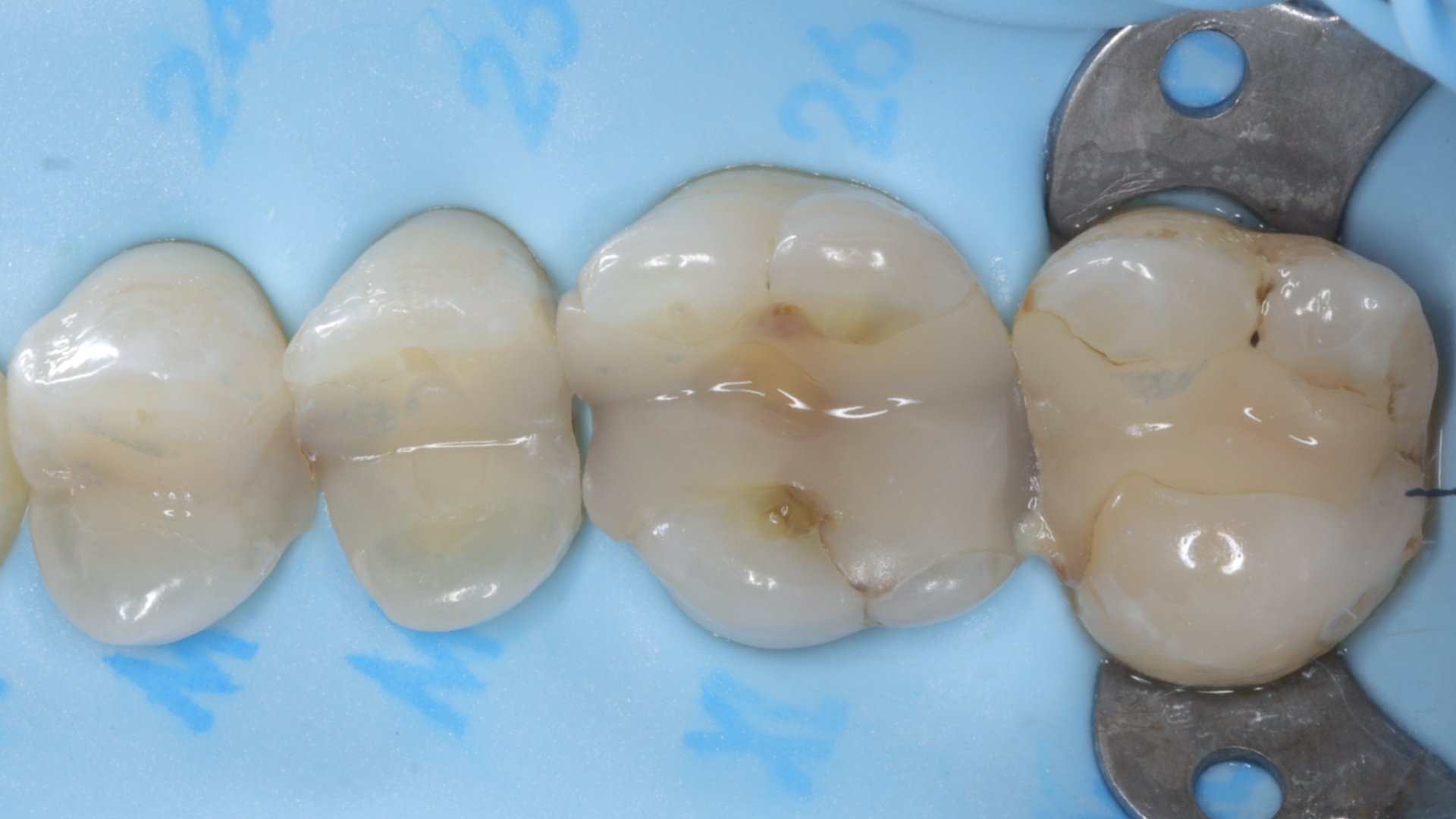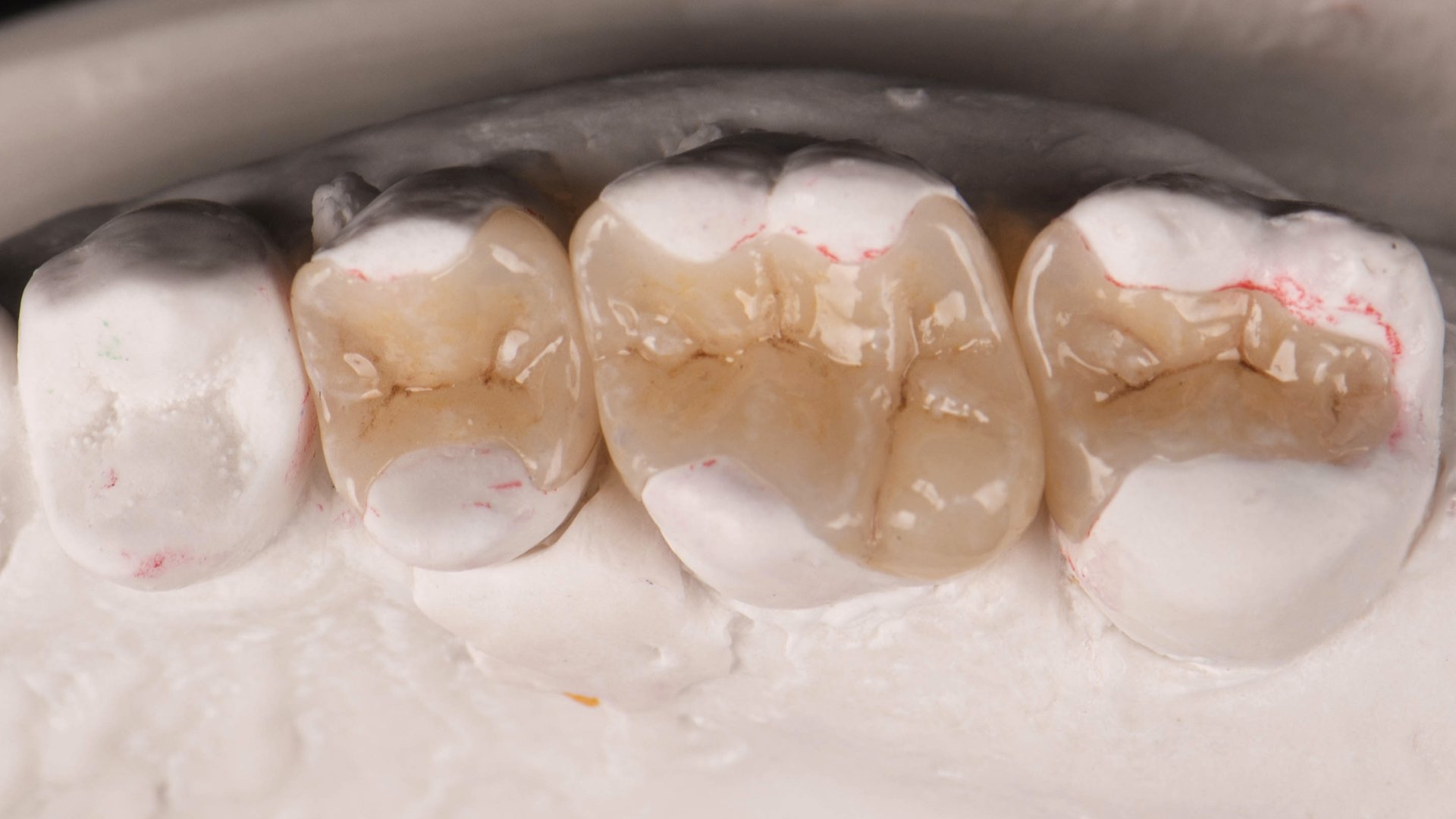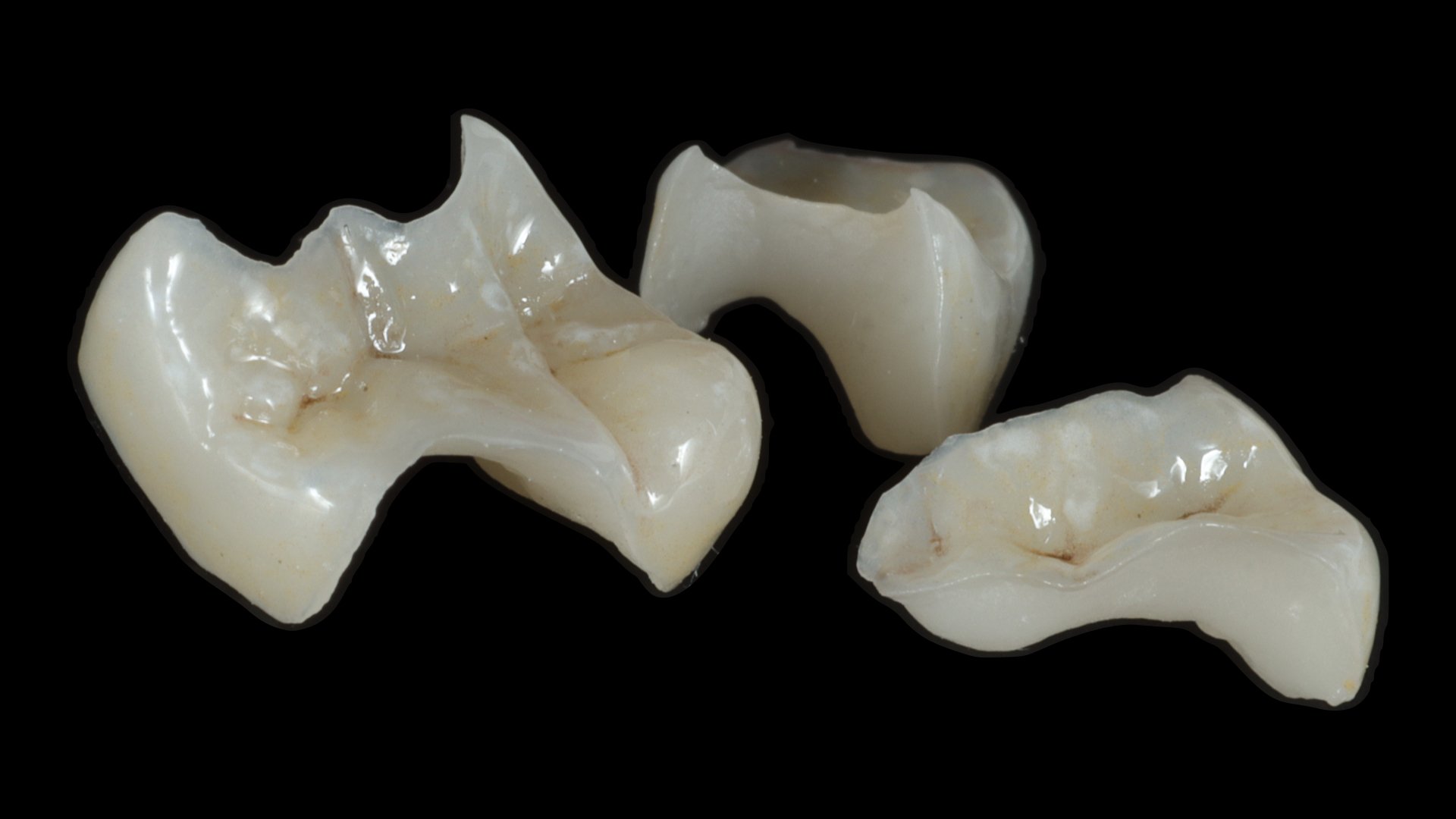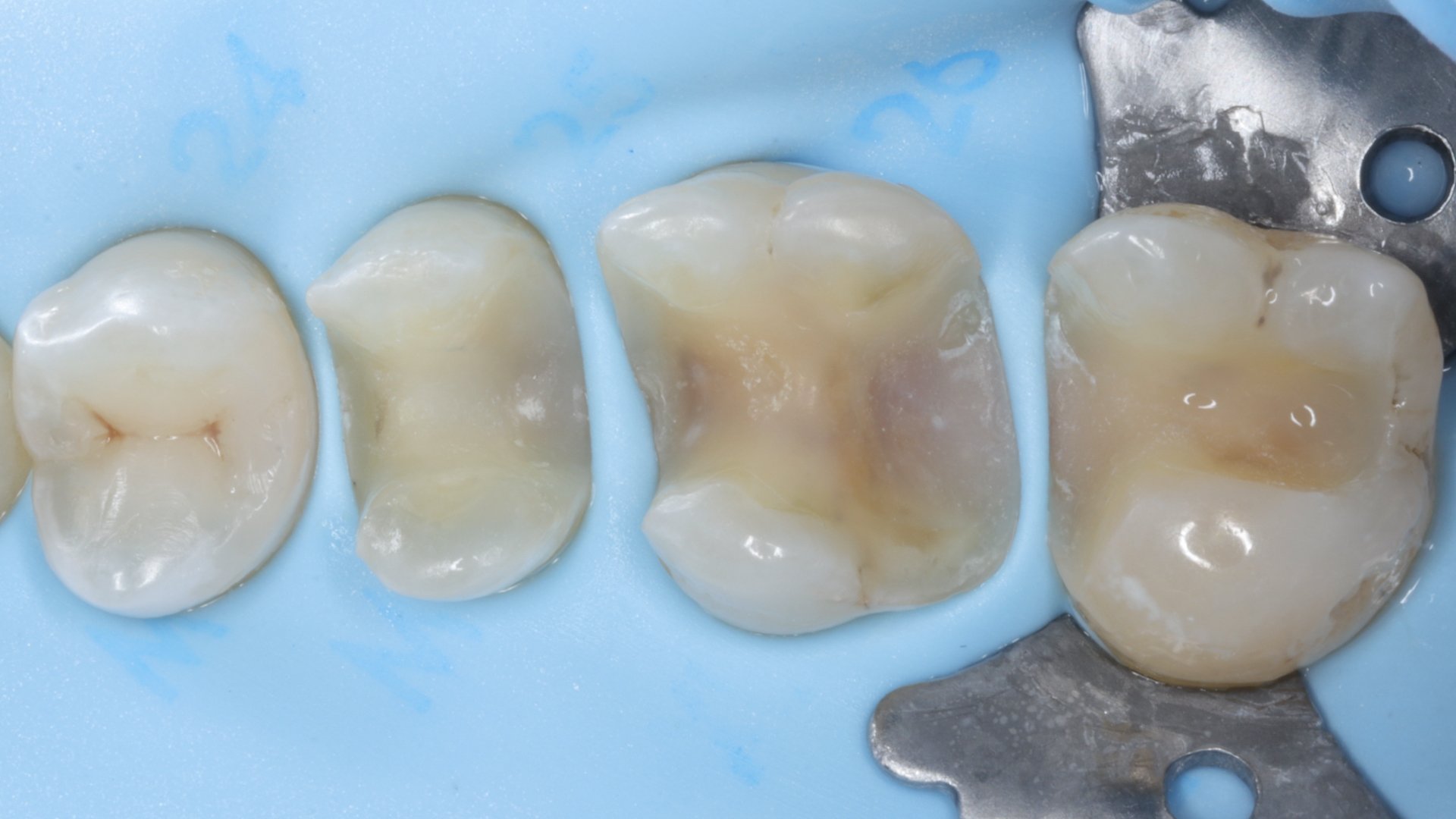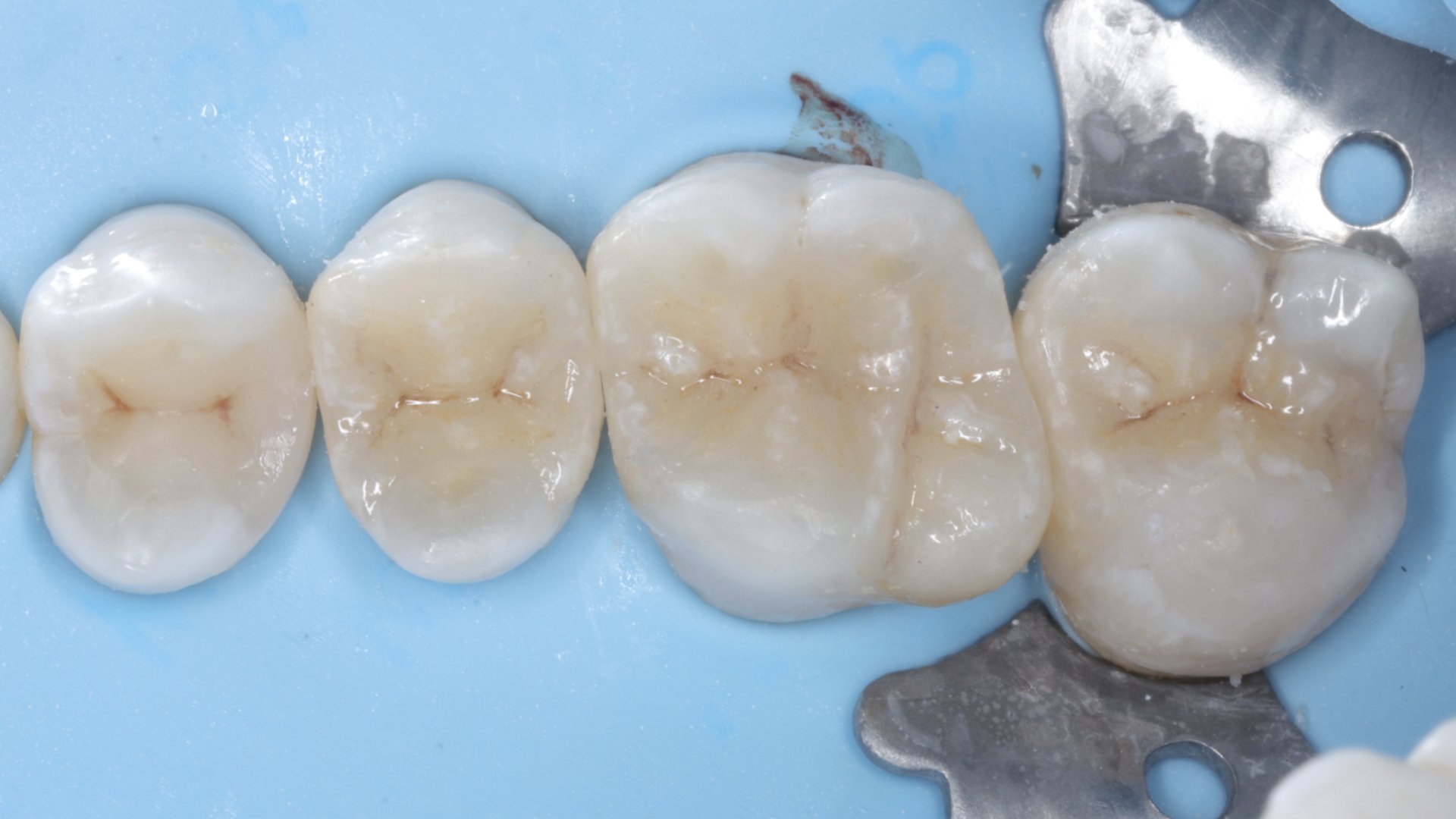Posterior Porcelain
This woman was internally referred to me to restore the posterior teeth. Three teeth are restored with porcelain, one tooth is restored with composite. In this case I’ll show you the different steps in posterior porcelain.
Initial photo
Before the start of each treatment a photograph from the teeth is taken.
Rubberdam isolation
In order to get the best possible bonding to the tooth and to make sure we have a really clean operator field I use rubberdam isolation in all porcelain cases.
Removal of the old restorations and decay
The old restorations and decay is removed as good as possible. During each treatment high magnification (8.8x or higher) is used in order to get the best result.
Air abrasion and Immediate Dentin Sealing (IDS)
At the end of the preparation phase the teeth are cleaned with air abrasion to get the best possible substrate for bonding. A first layer of composite is placed as a protective barrier and to promote optimal bonding to the tooth substrate.
Impression and/or scan
After the treatment and impression and/or scan is taken and this is sent to the dental technician.
Temporary crown
A temporary crown is fabricated to protect the tooth after treatment while the definitive crown is being made.
*Note: this photo is from a different case
The dental technician
On this impression and/or scan the dental technician will fabricate the porcelain restorations. This usually takes 2-3 weeks to complete.
Partial restorations
In order to save as much healthy tooth structure most porcelain restorations are partial restorations. Full crowns are no longer the gold standard and will only be made in replacement cases.
Bonding of the restorations
The rubberdam is applied again and all restorations are double checked for their fit and color integrations.
Bonding of the restorations
The restorations are bonded one-by-one and this usually takes 30 minutes per restoration.
Final result
It’s my goal to always try to restore the tooth in its original form, function and strength. This means we will reconstruct the original anatomy of the tooth and try to make our restorations invisible in the mouth.
Please note: the results of this treatment may vary from patient to patient. Your own treatment may differ from what’s prescribed here. During the intake we will discuss different treatment options and discuss what’s best for you and what you can expect.

